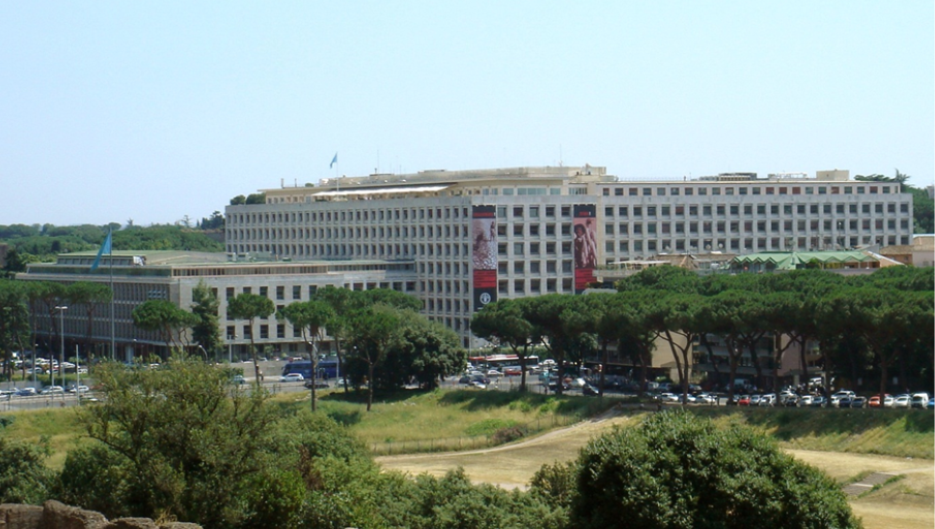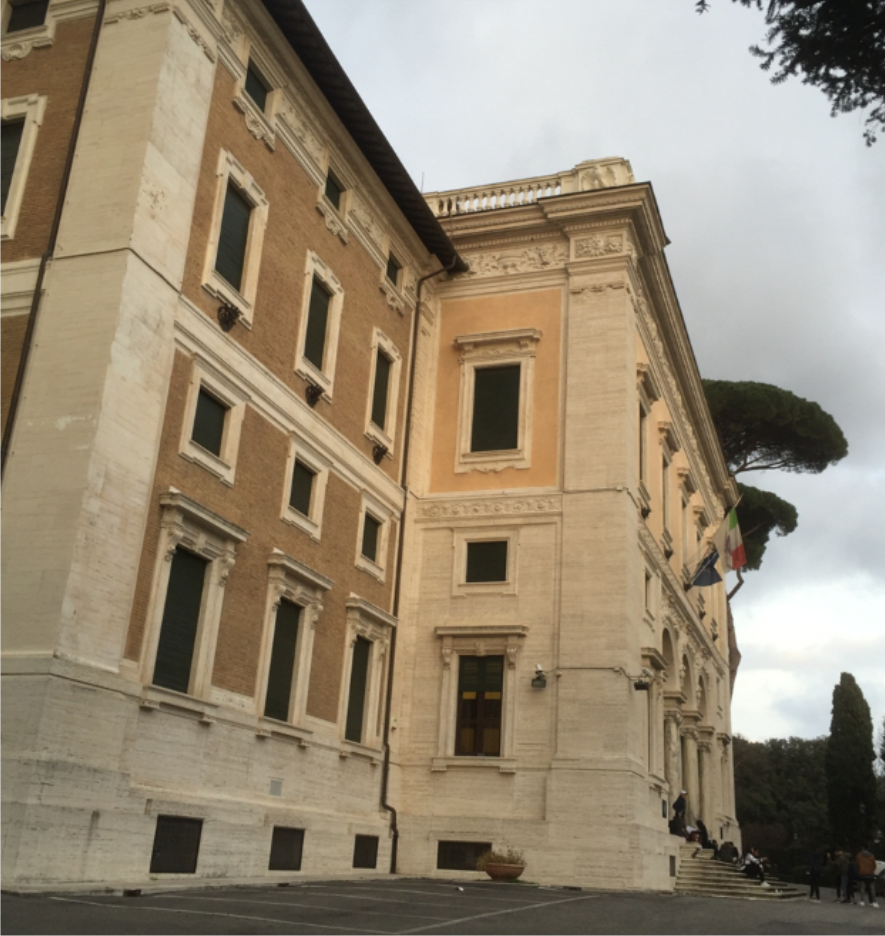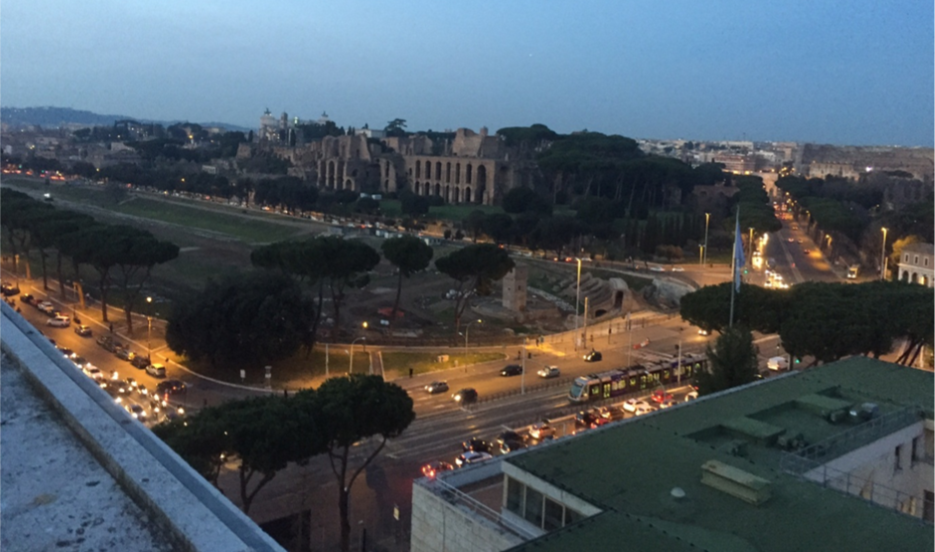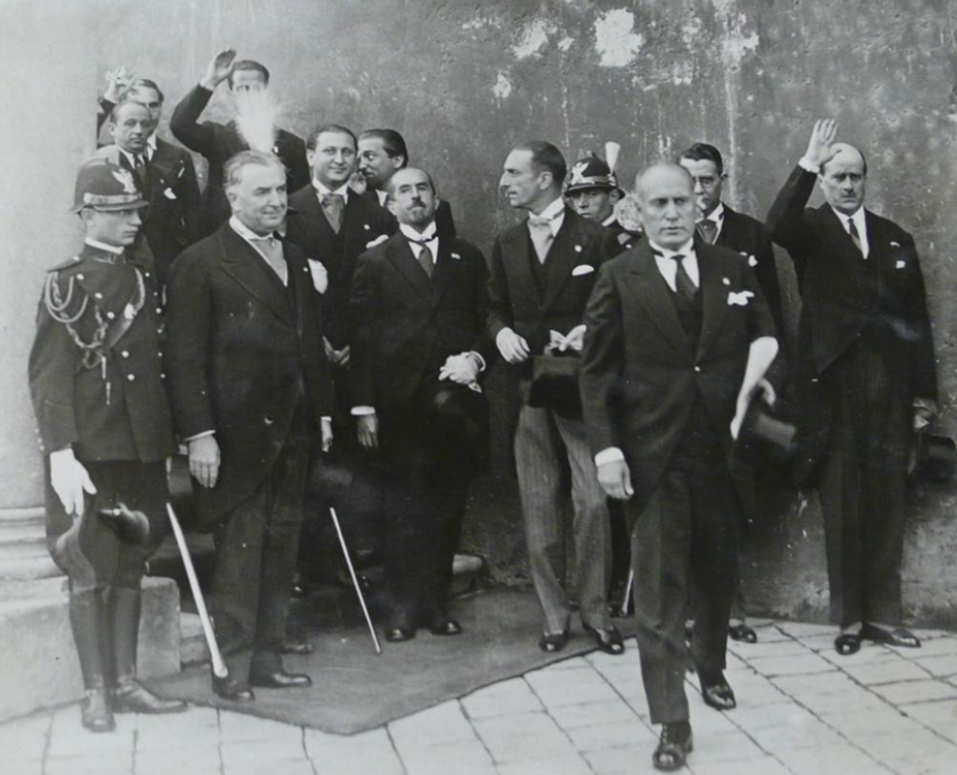
December 1, 2016, by Mike Heffernan
International Institute of Agriculture Archives, Rome
I recently spent ten days at the UN Food and Agriculture Organisation (FAO) in Rome, investigating the FAO’s forgotten precursor, the International Institute of Agriculture (IIA).
The IIA was established in 1905 by David Lubin (1849-1919), a wealthy American businessman and agrarian philosopher whose name is memorialised in the FAO’s library. The IIA reflected Lubin’s conviction that the world’s food supply could only be assured in an era of rapid population increase by nation-states collaborating to counteract the influence of large corporations concerned solely with profits. Lubin conceived of the IIA as a statistical ‘clearing-house’ that would promote a rational and scientific approach to world agriculture while also functioning as a model for international governance.
Lubin’s ambitions were enthusiastically endorsed by many internationalists, including H. G. Wells who saw the IIA as a harbinger of the future. Victor Emmanuel III, the Italian King, was equally enamoured and provided Lubin with substantial funds and a palatial residence, the Villa Umberto, to ensure that the new venture was based in Rome, capital of the ancient world, epicentre of the largest Christian denomination and hence a natural home for new international organisations. Although Lubin succumbed to the influenza epidemic in 1919, the IIA became an influential organisation over subsequent years, working alongside but always independently of the League of Nations. International conferences, in Rome and elsewhere, were a notable feature of the IIA’s operation.
As this was my first encounter with Italian archives, I spent some time preparing for my visit. I spoke at length on Skype with the FAO archivist, Fabio Ciccarello, a man of courteous, old-world charm whose extensive knowledge of the IIA proved indispensable. AirBnB provided what turned out to be an excellent studio apartment in the heart of Trastevere, the liveliest part of the city and an easy walk to the FAO. Friends and colleagues, including David Atkinson and Ginnie Panizzo, provided much needed advice on restaurants and shops.
Preparations also involved watching three films set in Rome—Roberto Rossellini’s Roma città aperta (1945), Federico Fellini’s La dolce vita (1960) and Paolo Sorrentino’s La grande bellezza (2013). These movies significantly influenced how I made sense of the city and the IIA archives. The first is set in 1944 when Rome was under German occupation following the collapse of Mussolini’s fascist regime in the city; the second explores the shallow, celebrity-obsessed age of the early paparazzi at the beginning of the 1960s; and the third examines Berlusconi-era hedonism through its memorable central character, an middle-aged roué drifting aimlessly through the city’s bars and restaurants.
Sorrentino’s depictions of Rome’s early 21st century demi-monde make for difficult viewing, especially for middle-aged men, so I resolved to conduct myself throughout my stay with a monkish reserve appropriate to my task. Sadly, this determination did not survive the first weekend thanks largely to the interventions of Robert Hearn, a Nottingham postdoc based at the British School in Rome (BSR), and Luca Muscarà, an Italian geographer on a Roman sabbatical whom I encountered, quite by chance, less than an hour after my arrival. As I had no choice but to accept Luca’s age-old advice—‘when in Rome…’—my evenings became less abstemious and more entertaining than I had anticipated, and included a pleasant supper in the grand surroundings of the BSR, an imposing edifice designed by Sir Edwin Lutyens as Britain’s national pavilion for the 1911 Esposizione internazionale d’arte that celebrated the 50th anniversary of Italian unification.
The Villa Umberto, the IIA’s original home, now forms part of the Italian Finance Ministry and is only a short walk from the BSR and the other national academies that have co-ordinated the international investigation of the city’s artistic, archaeological and historical heritage since the 19th century (see image above). The villa’s surroundings retain many of the embellishments constructed for its former role, including a delightful statue of a young woman gathering corn (see image below). When I visited the site to take photographs, a boisterous group of multi-national teenagers, speaking a mixture of Italian, English and French, were line dancing on the impressive marble steps while the Kenny Rogers-Dolly Parton country-and-western duet ‘Islands in the Stream’ boomed out from a ‘ghetto-blaster’. Lubin would certainly have approved.
The FAO headquarters, a sprawling complex of marble, concrete and glass, is a very different but no less impressive building (see above). Designed in the late 1930s by Vittorio Cafiero, it was originally intended as Mussolini’s colonial ministry but was still unfinished at the outbreak of World War Two. When finally completed in 1952, the building was handed over to the UN, thereby converting a monument to fascist imperialism into a temple to post-1945 internationalism, a transformation affirmed not by altering the original design but by relocating the IIA’s library and archives from the Villa Umberto to the new building.
As a UN facility, Italy has no jurisdiction over the FAO and I was obliged to surrender my passport every morning at the heavily securitised entrance (see above). Wandering along the building’s echoing corridors, past authentic 1960s furniture, is like walking through the set of James Bond movie featuring Sean Connery. A very good restaurant on the uppermost floor gives access to a capacious marble terrace with stunning views over the Baths of Caracalla, the Circus Maximus and the broad sweep of the city’s skyline (see below). Lunch is an unmissable experience in this wonderful setting, surrounded by hundreds of UN officials conversing in a babel of different languages. Archivist Fabio told me in hushed, reverential tones of spectacular terrace parties on summer evenings in the 1960s and 1970s, adding ruefully that the UN is too impoverished and too serious for that kind of socialising today.
The IIA archive is a well catalogued and largely untouched resource that provides a wealth of information on the challenges faced by interwar internationalism. The most interesting documents are those that demonstrate how Lubin’s liberal internationalism was gradually compromised during the 1920s and 1930s by Giuseppe de Michelis and other IIA officials who were sympathetic to fascism, though no less committed to their own version of internationalism. One file contains a remarkable sequence of photographs recording the IIA’s 25th anniversary celebrations in 1930. These look like stills from a Fellini movie and speak directly to the themes we are seeking to explore in our AHRC project.
The photographs feature Mussolini, Victor Emmanuel III, and assorted ambassadors and international dignitaries, including Lubin’s former secretary, translator and biographer Olivia Rosetti Agresti whose youthful commitment to anarchism had long since been replaced by her equally fervent devotion to fascism. They reveal the subtle conflicts, tensions and embarrassments over comportment, dress and protocol that characterised these stilted public occasions, while also highlighting the importance of photojournalists, the forerunners of Fellini’s paparazzi, who created these images.
Several photographs show the bullet-headed Mussolini before, during and after his florid speech in which he sought to reconcile the IIA’s internationalism with his vision of a greater imperial Italy. He was sporting an ill-fitting morning suit, a top hat and a permanent scowl—mafia hitman meets disgruntled provincial solicitor. Victor Emmanuel, a tiny man barely five feet tall who was greatly irritated that even the diminutive Mussolini towered above him, was decked out in an absurdly camp army uniform with a preposterous cap from which a single, foot-long plumed feather extended directly upwards, presumably to make him appear taller than Il Duce as the two men stood side by side before the ranks of photographers whose crisp images, taken over 80 years ago, now enrich this remarkable archive. The image below shows Mussolini striding towards the camera while Victor Emmanuel’s feather, the only evidence of his presence, protrudes above the heads of the assembled worthies. Finding these photographs was an unexpected bonus: ‘La dolce vita negli archivi’ indeed.
No comments yet, fill out a comment to be the first






Leave a Reply